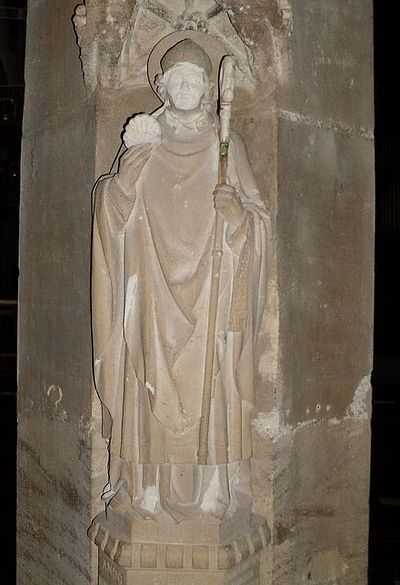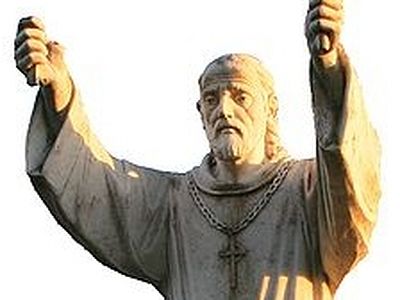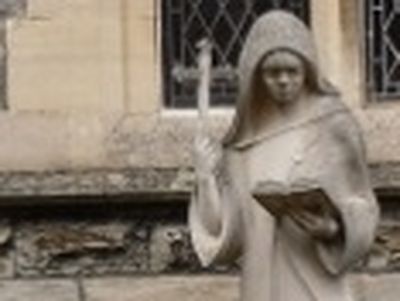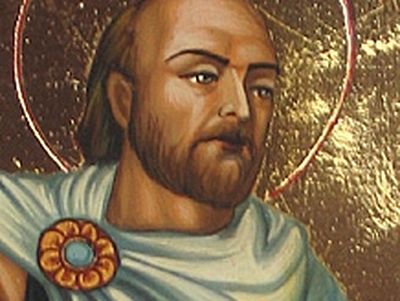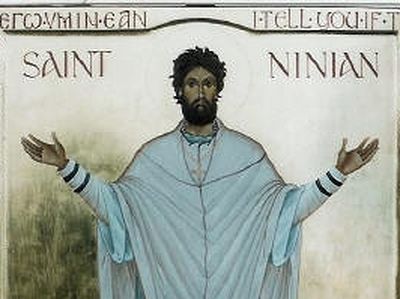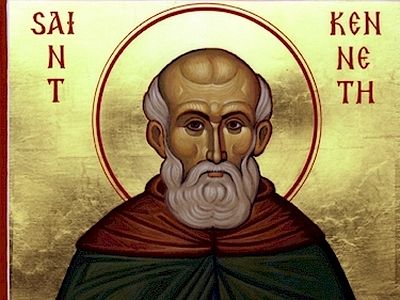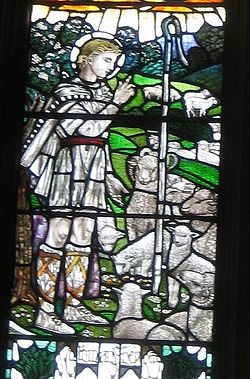 St. Cuthman - shepherd
St. Cuthman - shepherd
According to tradition, St. Cuthman was born in about 681 in Chidham, now a small village not far from Chichester and surrounded by an area of outstanding natural beauty. The Anglo-Saxon kingdom of Sussex was the last ancient English kingdom to embrace Christianity in the late 7th century. A great missionary, St. Wilfrid, the future Bishop of York and Hexham, preached in Sussex from about 680 to 686, and he is considered to be the main apostle of the "South Saxons". Tradition tells us that it was precisely St. Wilfrid who converted St. Cuthman’s parents to Christianity and then baptized them together with their newly-born son Cuthman.
The life of St. Cuthman says that from childhood the future saint revered his parents, obeyed them in everything and devoted much time to prayer; young Cuthman also worked very hard to help his parents. It is known that he tended sheep. The saint's father died when he was still a very young man and soon after that his mother was paralyzed. St. Cuthman took care of her until her death. When St. Cuthman and his mother grew so poor that they had nothing to eat, they had to start begging, going from cottage to cottage of God-loving people. The saint made a hand-barrow for his paralyzed mother and carried her in it.
He never grumbled at his destiny but always sincerely thanked the Lord for everything and sought only to do His will. Thus, living this simple life, full of hardships, Cuthman offered up his fervent prayers to the Creator day and night. With time, St. Cuthman and his mother decided to leave their native home completely. One morning, at dawn, they set out, heading eastwards. As usual he pushed his mother in the cart, which he had tied up with a rope. He decided that as soon as the rope had frayed through, he would take it as a sign of God and stop there immediately to build a church. The rope frayed through at a place called Steyning—now a quiet, little, picturesque town near Chichester. St. Cuthman stopped there and addressed the Lord with the words of prayer: "Lord Almighty! Thou hast put an end to my wanderings. Help me to start my work. For, who I am, O Lord, to build a holy church in honor of Thy Name? If I rely only on my strength, will it bring any result? Only on your help, O Lord, is my hope!"
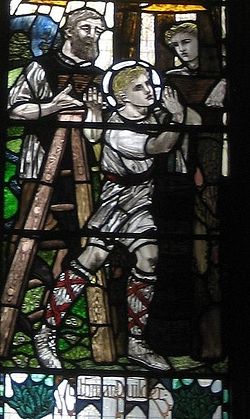 St. Cuthman - builder
St. Cuthman - builder
Soon the little church was nearly complete, only the roof beam had to be added; but Cuthman did not know how to finish it. At that very moment a stranger appeared and showed him how to finish the roof. The holy man thanked the man, asked him his name and the latter answered: "I am the one in whose honor you are building this church." Cuthman realized that it was the Lord Himself who had helped him. Little is known about the history of this church after St. Cuthman's death, though it is certain that a permanent church has existed on this site since at least the mid-9th century.
The saint himself lived as a hermit in Steyning until his death, which took place in the middle of the 8th century. After the repose of his mother he spent his days and nights constantly praying in his small church for the glory of the Lord's name. Quite often he went out to preach the Word of God to the residents of neighboring settlements, where many miracles of healing took place due to his prayers. Soon the whole local population came to believe in Christ and began to live a devout life. The people loved Cuthman for his kindness, simple life, and sincere faith. And Cuthman loved everyone as well. He loved to pray and thank the Lord, loved his church, loved the people and took care of them, helping them by prayer.
According to tradition, the enemy of mankind was so irritated with St. Cuthman and other great saints and ascetics, through whose labors all the country became Christian during the late 7th century, that he plotted to kill the Christians of Sussex—the last Saxon kingdom to accept Christianity. One night the evil one began to dig a tunnel under the ground near the hill fort called Chanctonbury Ring, intending to dig a channel as far as the sea and so drown all the people of Sussex. But the Lord revealed Satan’s cunning plot to the holy ascetic and man of prayer, who prayed unceasingly even at night.
The saint lit a candle and prayed for the devil to be banished. Through the zeal of his prayer the candle began to burn so strongly that it seemed to turn into a pillar of light; the evil spirit was at once weakened, exhausted by the prayer of the saint and, exposed, moved away, unable to complete his evil plot. In that region of Sussex the hills have survived to this day in memory of that event (the legend says that this is the very earth that was thrown away by the evil one from the tunnel) around Chanctonbury Ring and other sites; ravines and ditches associated with that tradition have survived as well—one of them is called "Satan’s ditch".
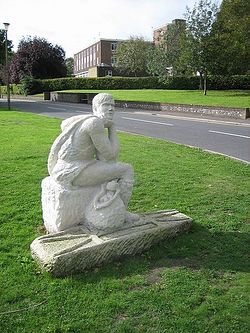
St. Cuthman, who so much loved to pray in his church dedicated to the Lord, was venerated in Sussex and especially in Steyning. In some charters of William the Conqueror, Steyning is mentioned as "the port of St. Cuthman" or "the parish of St. Cuthman". With time, part of his relics were translated to the monastery of Fecamp in Normandy, where they were much venerated; this contributed to a wider veneration of the saint in Europe, especially in northern France.
St. Cuthman is depicted among the carvings of the choir stalls in Ripon Cathedral in North Yorkshire—his figure with a three-wheeled cart (mid-15th century) can be seen there to this day. At the birthplace of this hermit, in Chidham, a guild of St. Cuthman existed in the 17th century or even earlier. It is amazing that the memory of this humble, quiet, rural saint has not been erased by centuries of reforms and secularism and that he is still commemorated and loved!
 St. Andrew's Church in Steyning, West Sussex
St. Andrew's Church in Steyning, West Sussex
The present St. Andrew’s Church in Steyning, which stands on the site of his original church (built by the saint himself with the help of the Lord), dates back to the 13th century. Among other relics, there are two stained glass windows in the church, depicting scenes of St. Cuthman's life. A statue of the saint, produced by the sculptor Penny Reeve, stands in front of the church. St. Cuthman, carrying his mother on his cart, is depicted on the official emblem of the town of Steyning, to this day. The meek hermit Cuthman is now venerated as the patron saint of shepherds. He is also the patron of Steyning and West Sussex.
Holy and Righteous Cuthman of Steyning, pray to God for us!
